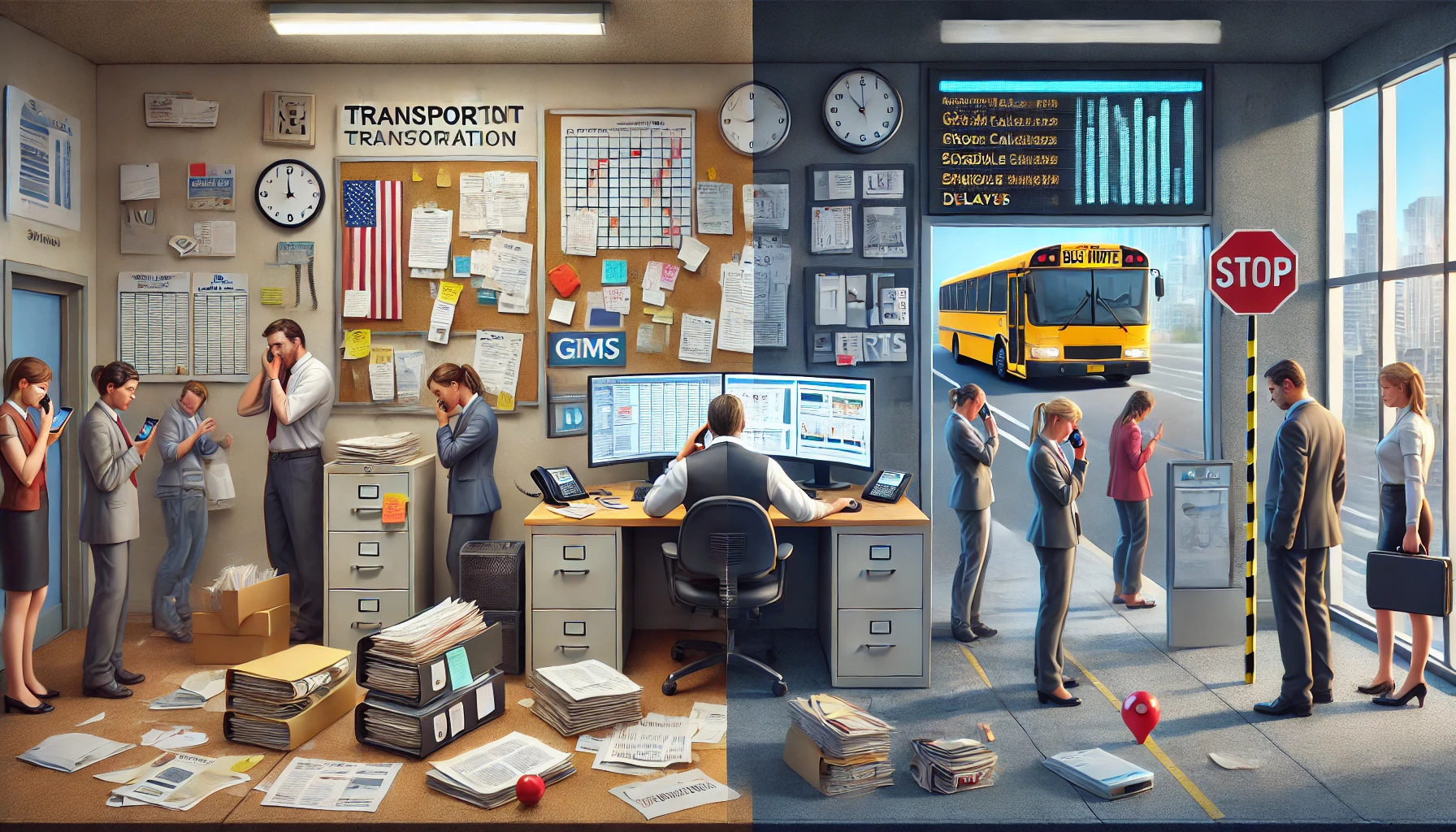From Manual to Automated: How ITMS is Streamlining Fleet Operations for Employee Transportation

In today’s world, it can be challenging to support an employee transportation fleet of buses. With the planning of routes, scheduling of maintenance checks, or merely conforming to company policy, traditional manual fleet management systems tend to result in inefficiencies, human error, and additional costs. But as business increasingly relies on technology, the shift from manual to automated fleet management is making a significant impact. Step into ITMS - Intelligent Transportation Management Systems, which are revolutionizing how businesses deal with employee transport. This blog examines the ways that ITMS solutions are transforming fleet operations, streamlining processes, and ultimately impacting the bottom line of businesses.
The Disadvantages of Manual Fleet Management
Before describing the advantages of automation, let us consider a few of the disadvantages of doing fleet management by hand. Listed below are a few of the main problems organizations encounter:
- Cumbersome Scheduling: Takes too long to be done manually, and so much effort has to be made in order to include traffic behaviour, best routes, staff pick-up points, and vehicle availability. There may be mistakes leading to delay, employee discontent, and ineffectiveness.
- Discrepancies in Information: Manually recording vehicle usage, fuel consumption, maintenance schedules, and employee comments is likely to lead to incomplete or inaccurate data. Wrong or poor decisions ensue.
- Higher Operating Costs: In the absence of real-time tracking, there is poor routing, increased fuel use, and underutilized vehicles that ultimately drive transportation costs higher.
- Lack of Visibility: In the absence of real-time tracking, business entities fail to have an immediate overview of how their fleet performs, and identifying inefficiencies or issues needing focus becomes hard to achieve.
- Compliance Risks: Maintaining the vehicle's current status on safety features, and regulatory requirements, and following regular maintenance is difficult to oversee without an automated assistant.
The Transition to ITMS: Manual to Automated
Since companies understand that what exists currently is not satisfactory and there must be a better, cheaper method for managing fleets, ITMS offers a better, automated alternative. The following explains how businesses can move away from manual systems toward a more data-driven, automated system:
1. Centralized Data Management
ITMS provides a unified platform wherein all the important fleet information from vehicle status and employee scheduling to maintenance history and fuel consumption is brought together and stored in a single location. This allows companies to monitor activities in one dashboard, which is better than manually processing several spreadsheets and systems.
With real-time information gathering and refreshing automatically, ITMS enables up-to-the-minute, data-based decision-making. The fleet managers can access fleet performance, maintenance requirements, and even employee satisfaction percentages, all of which allow them to make quick, informed decisions.
2. Real-Time Optimisation and Monitoring
The second major benefit of ITMS is that it provides real-time tracking of buses and their efficiency. Real-time tracking makes companies capable of tracing the position, speed, and fuel consumption of all buses. Visibility can include real-time rerouting, reduced delay, and fuel efficiency.
Besides that, ITMS systems also provide factual details regarding how routes can be made more efficient. For example, by analyzing previous traffic patterns, an ITMS can chart the shortest trip for each journey on its own, saving travel time as well as fuel.
3. Computerized Scheduling
Manual scheduling is time-consuming and error-prone. With ITMS, employees are picked up and dropped off at predetermined times. The system can direct employees to available vehicles based on proximity, vehicle capacity, and availability, utilizing resources optimally.
4. Improved Reporting and Compliance
Fleet managers typically have trouble keeping track of regulatory compliance and requirements, such as vehicle inspection, driver certification, and safety regulations. ITMS facilitates this by tracking and overseeing all compliance processes in one place. It can be automated to schedule and track driver certifications, maintenance, and inspections through the system. Automated reporting also enables companies to quickly generate compliance reports, minimizing the possibility of fines for late filing or paperwork.
5. Enhanced Employee Experience
Employee satisfaction is most crucial when it comes to transportation services. ITMS not only makes the operational aspect of fleet management efficient but also improves the employee experience. Through automated scheduling, efficient real-time notifications, and regular service delivery, employees get to experience a more predictable and reliable transportation experience.
Moreover, with optimized routes and less travel time, employees are on the road for less time, and thus there is increased efficiency and a better work-life balance.
Why ITMS is a Game-Changer for Fleet Management?
Converting to an automated ITMS has various critical advantages for those organizations that would like to streamline their fleet management:
- Cost Savings: Route optimization, fuel efficiency, and schedule maximization enable companies to reduce their transportation cost substantially.
- Better Efficiency: Automating the manual processes, automation minimizes human efforts, and speed and accuracy increase in fleet management. This results in improved use of resources and reduced downtime.
- Insights through Data: ITMS offers businesses insights into fleet performance so that managers can make improved decisions regarding their operations.
- Scalability: With the increasing size of companies, ITMS can be scaled up to accommodate larger fleets and more sophisticated transportation needs without disturbing the underlying infrastructure.
- Sustainability: By enhancing fuel efficiency and routing, ITMS can help businesses lower their carbon footprint towards a more sustainable business.
Conclusion
Moving away from an old employee transport management system to an ITMS-based system is a revolutionary milestone for firms based on worker transportation. The advantages are palpable - enhanced efficiency, lowered costs, better control over fleet operations, and increased employee satisfaction. With continued technological progress, Arena Softwares ITMS solutions will stay ahead, offering more and more features to automate fleet operations and allow businesses to achieve their goals with ease. Arena Softwares is paving the way; fleets can look forward to a smarter, more efficient, and more productive future than ever. Connect with Arena Softwares today.
